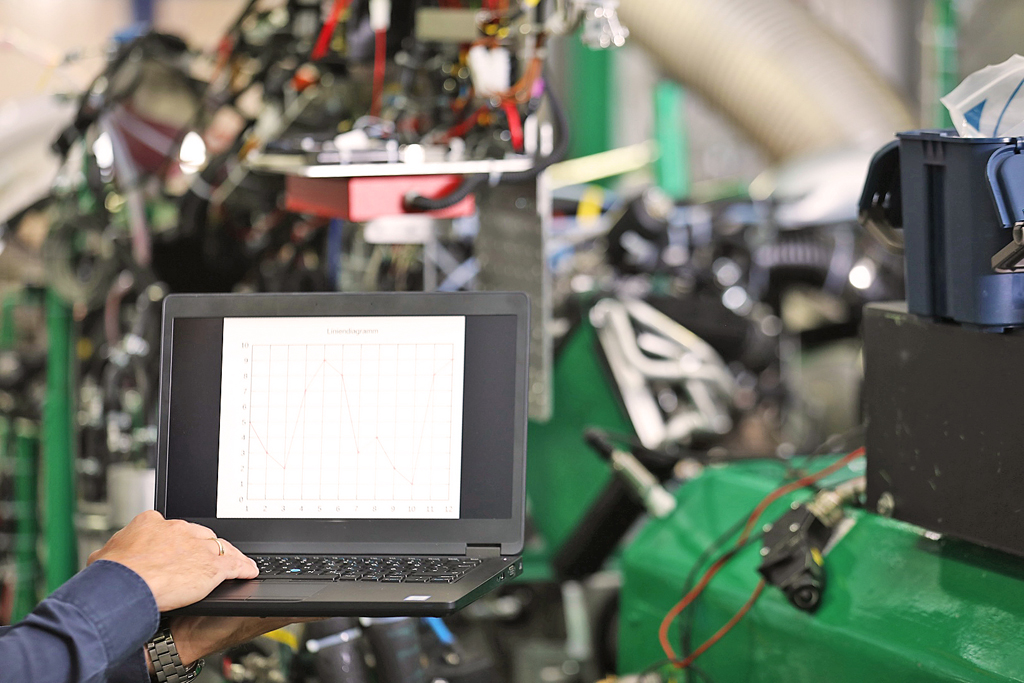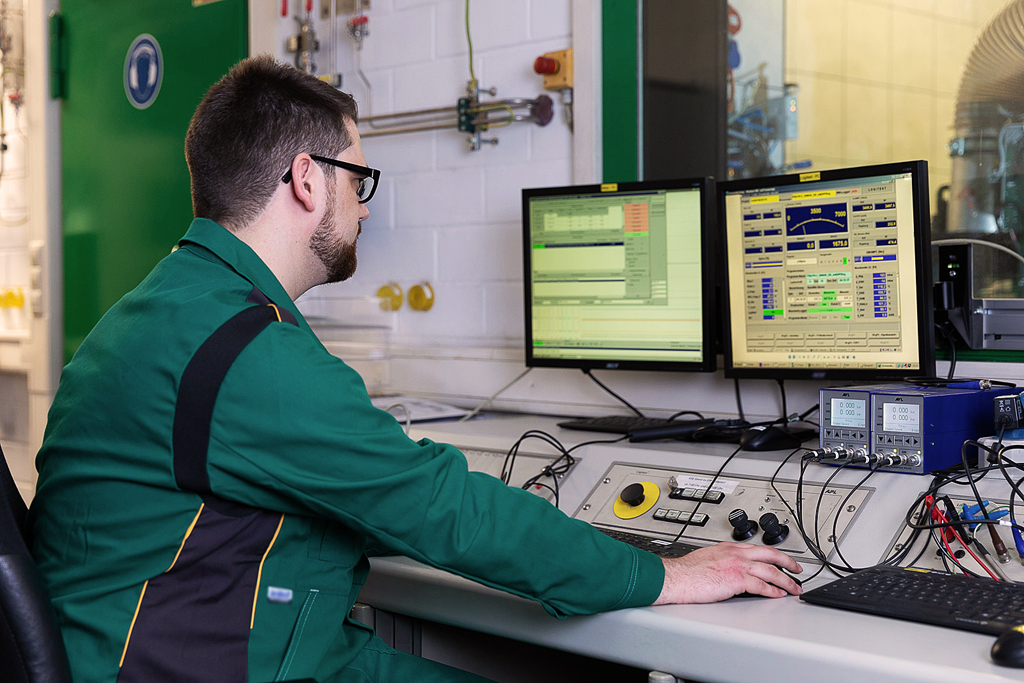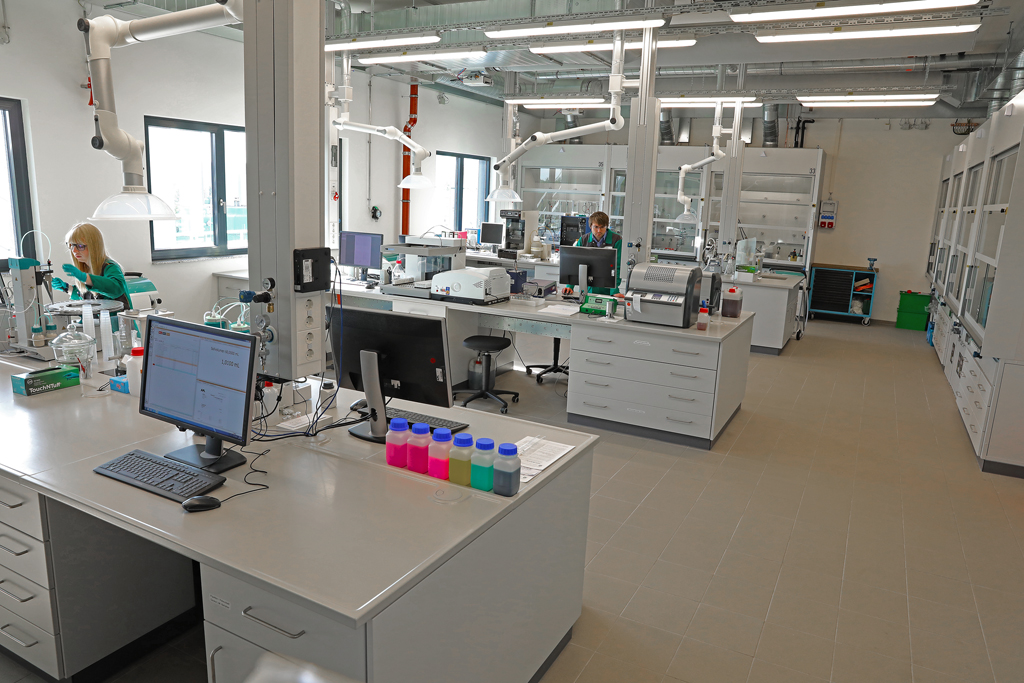// Combustion Engine Powertrains
Increasing Efficiency — Reducing Emissions

Mechanical Development, Component Testing and Validation
Our powertrain engineering staff take care of all questions raised by our customers. Due to our employees’ precise, particular work methods, abnormal features in the development process are detected early on and damage is avoided.
Varied procedures are used for this purpose:
- Online wear and emission analysis to resolve and assign damage mechanisms over time
- Oil supply
- Friction power analysis
- Component and damage analysis, for which we have modern 3D laser scanners at our disposal
Tribology
Fuel Selection and Testing
The choice of fuel is a decisive factor in continuously optimising target variables such as engine performance, efficiency, emissions and product costs.
APL offers comprehensive know-how in testing, evaluation and development of operating materials. Examples include the evaluation of fuel composition (blending, worst-case & regenerative fuels) with regard to emissions or development of methods for evaluating additives and lubricants and their pre-ignition gradient (low-speed pre-ignition).
Oil Circuit
Broad Range of Measurement Technology
Combustion Process, Thermodynamics, Basic Application
Exhaust Gas Aftertreatment: Components, Function, Data Processing, Aging, Security
In the development of exhaust gas aftertreatment, the system combination of engine, exhaust gas aftertreatment components and functions must always be considered. APL offers a comprehensive service portfolio for this very purpose – starting with basic analyses (e.g. deposit formation), through component and function development, to validation on the engine test bench or in the vehicle.
On our test benches for hot gas, for example, we examine catalytic converters under reproducible conditions. On our test benches for SCR systems we analyse spray formation and can optimise mixing sections.
During the implementation of development projects there is always a need for aged exhaust aftertreatment components. Both as part of our customer projects and as an independent service, APL offers aging of exhaust systems in the hydrothermal furnace and targeted aging on the engine test bench. The aging parameters are freely selectable and, thanks to aging on several parallel lines or test benches, large quantities can be completed in a short time.
Basis Calibration
Drivetrain: Calibration, Testing, Security
Application, Testing and Validation in the Vehicle, Emissions, OBD
Related topics:

Testing of Internal Combustion Engine Drivetrains

Chamical and Physical Laboratory
// Locations
Headquarters Landau
APL Automobil-Prüftechnik
Landau GmbH
Am Hölzel 11
76829 Landau
// Wolfsburg
APL Automobil-Prüftechnik
Landau GmbH
Gustav-Hertz-Straße 10
38448 Wolfsburg
// Bietigheim-Bissingen
APL Automobil-Prüftechnik
Landau GmbH
Robert-Bosch-Straße 12
74321 Bietigheim-Bissingen
// APL Group
@2022 APL Automobil-Prüftechnik Landau GmbH | Imprint | Privacy policy








